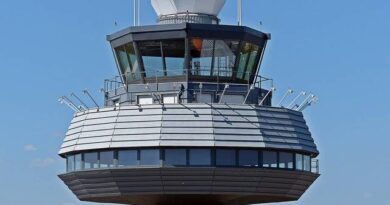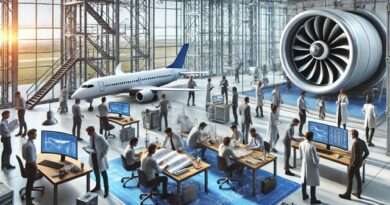Runway Rubber Removal Techniques: Enhancing Runway Safety and Performance
Every time an aircraft lands, its tires deposit rubber onto the runway surface. Over time, this accumulation can significantly reduce the runway’s friction, leading to potential safety hazards such as hydroplaning and decreased braking efficiency. Regular removal of these rubber deposits is essential to maintain optimal runway performance and ensure the safety of aircraft operations.
Understanding Rubber Accumulation on Runways
When an aircraft touches down, the tires, initially not spinning, rapidly accelerate to match the aircraft’s speed. This sudden acceleration causes a portion of the tire rubber to abrade and adhere to the runway surface, particularly in the touchdown zones. As these deposits build up, they can fill surface grooves designed for water drainage, leading to water pooling and increased risk of hydroplaning during wet conditions.

Common Rubber Removal Techniques
Several methods are employed to remove rubber deposits from runways, each with its advantages and considerations:
1. High-Pressure Water Blasting (HPWB)
This technique uses water at pressures up to 40,000 psi to dislodge rubber from the runway surface. It’s effective and environmentally friendly, as it doesn’t involve chemicals. However, it requires specialized equipment and can be time-consuming.
2. Chemical Solvents
Chemical agents are applied to the runway to break down rubber deposits, which are then washed away. While effective, this method requires careful handling to prevent environmental contamination and potential damage to runway markings.
3. Mechanical Removal
Mechanical methods, such as shot blasting or grinding, physically abrade the rubber from the surface. These methods can be efficient but may risk damaging the runway surface if not properly controlled .
4. Combination Methods
Combining chemical solvents with high-pressure water blasting can enhance effectiveness, reducing the amount of water and pressure needed, thereby minimizing potential surface damage.
Regulatory Guidelines and Best Practices
The International Civil Aviation Organization (ICAO) and the Federal Aviation Administration (FAA) provide guidelines for runway maintenance:
- ICAO recommends regular friction testing and rubber removal when friction levels fall below acceptable thresholds.
- FAA: Advises that runway friction should be monitored, and rubber removal performed as needed to maintain safe braking conditions.
Airports often use Continuous Friction Measuring Equipment (CFME) to assess runway conditions and determine maintenance schedules.
Environmental and Operational Considerations
Rubber removal operations must balance effectiveness with environmental impact. Using eco-friendly chemicals and ensuring proper waste disposal are crucial. Additionally, scheduling maintenance during low-traffic periods minimizes disruption to airport operations.
Recommended Article: Runway Friction Measurement Systems (RFMS)
Conclusion
Maintaining runway friction through regular rubber removal is vital for safe aircraft operations. By employing appropriate removal techniques and adhering to regulatory guidelines, airports can ensure optimal runway performance and safety.


